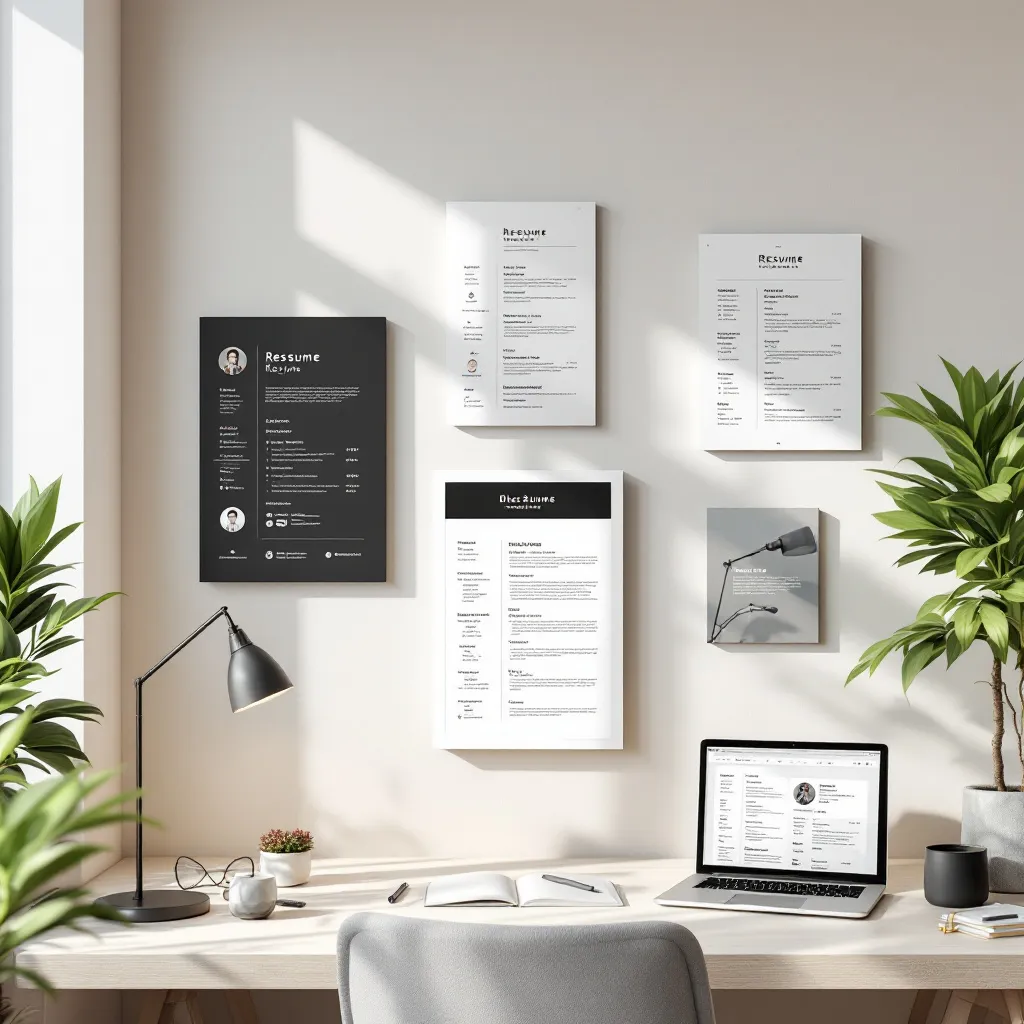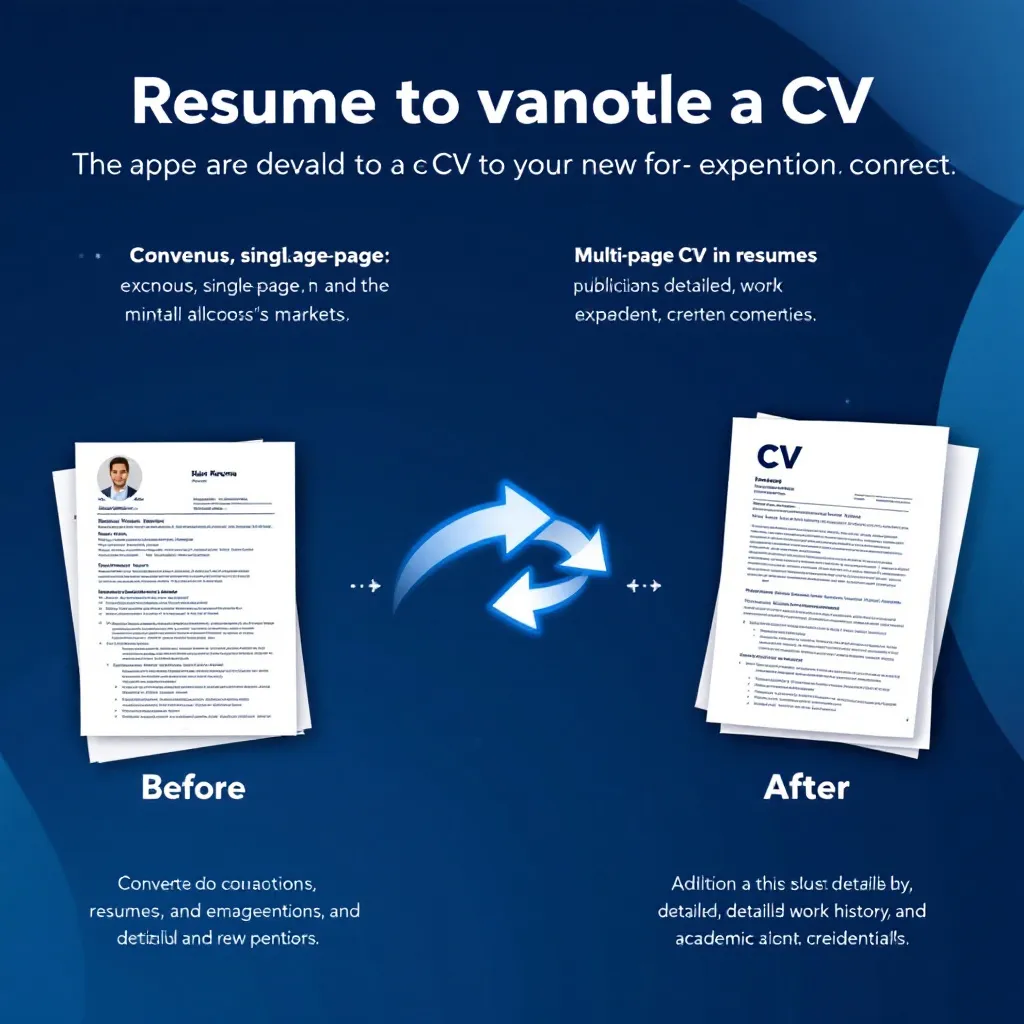Tag: resume formatting
-
Quick and Easy Resume: Create a Professional Resume in Under an Hour
In today’s fast-paced job market, the ability to create a professional resume quickly can make the difference between seizing an opportunity and missing out. Whether you’ve discovered a dream position with a tight application deadline or need to prepare for an unexpected networking event, knowing how to craft an effective resume in minimal time is
-
Contemporary Resume Templates: Stand Out With Modern Design in 2023
In today’s competitive job market, a well-designed resume can be your ticket to landing that coveted interview. Contemporary resume templates have evolved significantly from the traditional text-heavy documents of the past, offering job seekers powerful tools to make memorable first impressions while still satisfying the technical requirements of modern hiring processes. The Evolution of Contemporary
-
How to Convert a Resume to a CV: A Comprehensive Guide
In the U.S. job market, understanding when to use a resume versus a Curriculum Vitae (CV) can significantly impact your job search success. While most American employers request resumes, certain fields require the more comprehensive CV format. If you’re transitioning to academia, research, or international positions, knowing how to convert your resume to a CV
-
The Chicago Resume Template: A Professional Format for Standout Applications
In today’s competitive job market, choosing the right resume template can significantly impact your chances of landing an interview. The Chicago resume template stands out as a sophisticated choice for professionals seeking a clean, achievement-focused format that emphasizes substance over style. What is the Chicago Resume Template? The Chicago resume template is a formal, professionally
-
Creating Cool Looking Resumes That Stand Out to Employers
In today’s competitive job market, standing out from the crowd is essential. With hiring managers spending less than a minute scanning each resume, creating a visually appealing document that captures attention while effectively communicating your qualifications has never been more important. Let’s explore how to create cool looking resumes that make a lasting impression without
-
Modern Resume Formatting: 5 Design Principles That Will Make Your Resume Stand Out
In today’s competitive job market, a well-designed resume isn’t just a nice-to-have—it’s essential. With recruiters spending merely 6-8 seconds scanning each resume, the visual presentation of your qualifications can be just as important as the content itself. Let’s explore five key design principles that will help your resume capture attention while maintaining professionalism and ATS
-
Creating Professional Resumes with PowerPoint Templates: A Comprehensive Guide
In today’s competitive job market, standing out is essential. While traditional word processors have long been the standard for resume creation, Microsoft PowerPoint offers unique advantages that can help your application catch a recruiter’s eye. This guide explores how to leverage PowerPoint resume templates to create visually impressive yet professional resumes. Why PowerPoint is a
-
How Accurate is Kickresume’s ATS Simulation? A Detailed Analysis
In today’s competitive job market, getting past applicant tracking systems (ATS) is the first hurdle job seekers must overcome. Tools like Kickresume promise to simulate ATS behavior and help optimize resumes, but how reliable are these simulations? This analysis examines Kickresume’s ATS simulation accuracy and how it compares to real-world systems. Understanding Kickresume’s ATS Simulation
-
Transform Your Existing Resume into an ATS-Friendly Format: A Complete Guide
In today’s competitive job market, having a resume that can successfully navigate Applicant Tracking Systems (ATS) is essential. If you’re experiencing a lack of interview callbacks despite being qualified, your resume format might be the culprit. This guide will walk you through transforming your existing resume into an ATS-friendly document that gets past the digital
-
The Complete Guide to Creating an ATS-Friendly Resume in 2025
In today’s competitive job market, your resume must impress not just human recruiters but also the sophisticated software that stands between your application and a hiring manager’s desk. Applicant Tracking Systems (ATS) have fundamentally changed how companies screen candidates, making ATS optimization an essential skill for every job seeker. This comprehensive guide will walk you
-
The Ultimate Guide to AI Resume Builders: Transforming Your Job Search in 2025
In today’s competitive job market, standing out from the crowd is more challenging than ever. With recruiters spending mere seconds scanning each resume and automated systems filtering applications before human eyes ever see them, job seekers need every advantage they can get. Enter AI resume builders – revolutionary tools that are changing how candidates create,
-
7 Truly Free Resume Builders with No Hidden Costs or Paywalls
The job search process is stressful enough without the frustration of running into unexpected paywalls when trying to download the resume you just spent hours creating. Many online resume builders advertise themselves as “free” only to reveal hidden costs when you’re ready to download your finished document. This comprehensive guide will help you navigate the
-
Free Resume Builders: Create Professional CVs Without Spending a Dime
In today’s competitive job market, having a professionally designed resume is essential, but that doesn’t mean you need to spend money to create one. Whether you’re a first-time job seeker or looking to refresh your existing CV, numerous free tools can help you craft an impressive resume that stands out to employers and passes through
-
Essential Résumé Guidelines: What You Should Know When Creating Your Résumé
In today’s competitive job market, a well-crafted résumé can make all the difference between landing an interview or being overlooked. Whether you’re creating your first résumé or updating an existing one, following proven strategies will help you present yourself as the ideal candidate. This guide covers essential techniques for creating an effective résumé that appeals
-
What to Put on a Resume Cover Page: Essential Elements & Design Tips
A well-crafted resume cover page serves as your professional introduction, creating that crucial first impression before a hiring manager even sees your qualifications. While cover letters are more common in US and UK markets, a dedicated cover page can set your application apart in certain industries and situations. This guide will walk you through everything
-
Best File Format for Resume: PDF vs Word – What to Choose in 2024
Sending a resume in the wrong file format might seem like a minor detail, but it can make the difference between getting an interview or being overlooked. With so many options available—PDF, Word, RTF, and more—how do you know which resume file type to choose? This guide breaks down everything you need to know about
-
Essential Resume Components: What to Include in Your Professional Resume
Creating an effective resume requires understanding which components are truly essential for making a strong impression on employers. In today’s competitive job market, your resume needs to be concise yet comprehensive, highlighting your most relevant qualifications while passing through Applicant Tracking Systems (ATS). Let’s explore the key elements every professional resume should include. Essential Contact
-
The Ultimate Guide to Free Applicant Tracking Systems for Small Businesses
Small businesses and startups often operate with tight budgets, making recruitment tools that come with hefty price tags seem out of reach. Fortunately, free applicant tracking systems (ATS) offer an accessible entry point to streamline hiring processes without the financial commitment. This guide explores how these free tools can transform your recruitment efforts while acknowledging
-
What Does a Good Resume Look Like? Visual Elements That Get You Hired
In today’s competitive job market, your resume has about 6-7 seconds to make a positive impression. Beyond your qualifications, the visual presentation of your resume significantly impacts whether it gets a second look or lands in the rejection pile. Let’s explore what makes a resume visually effective in modern hiring processes, balancing both human appeal
-
Create a Professional Online Resume Using Website Templates
In today’s competitive job market, having a standout resume is more important than ever. While traditional PDF resumes remain valuable, creating an online resume using website templates offers significant advantages that can set you apart from other candidates. Let’s explore how to create an impressive online resume that showcases your professional achievements effectively. Why Create




















